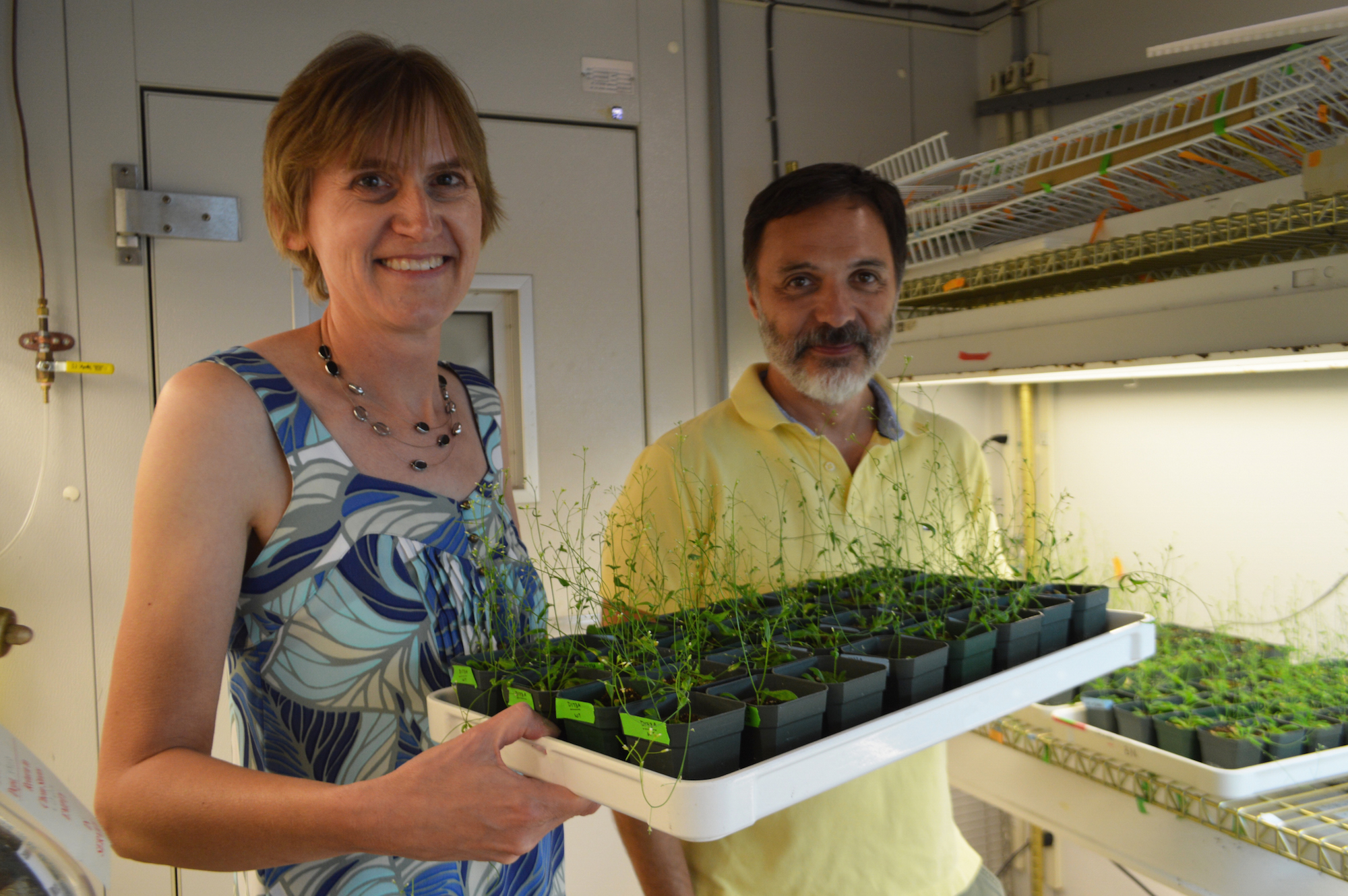
A cellular pathway being studied in plants by Diane Bassham and Gustavo MacIntosh may hold key information about encephalopathy in humans.
Bassham, Loomis Professor of Plant Physiology and professor of genetics, development and cell biology, and MacIntosh, associate professor of biochemistry, biophysics and molecular biology, said curiosity is what drives their work — the thrill of discovery and connecting the dots. Sometimes those discoveries and connections are unexpected.
“Whatever we do eventually is going to have an effect,” MacIntosh said. “When we started working on this plant, trying to understand a very basic process, we had no idea that we would be able to link that process directly to a human disease.”
But it turned out the pathway they were studying in plants has connections to a certain encephalopathy, or degeneration of neural cells in the brain, that begins in infancy.
They were investigating how ribosomes, molecular machines inside of cells that make proteins, are recycled, a process that happens in both plant and animal cells. To understand how and why ribosomes are recycled, they disrupted the process and observed what happened to cells when the ribosomes weren’t broken down properly.
Using Arabidopsis as a model plant, Gustavo’s lab knocked out an enzyme that breaks down ribosomal RNA inside the plant vacuole, a large specialized structure inside of a plant cell that takes up cellular waste to break it down. Once ribosomes are broken down by the enzymes within the vacuole, their building blocks are released into the cell to be reused.
However, Bassham’s lab showed that when the enzyme inside the vacuole that breaks the ribosomes down is not functioning, the ribosomal RNA accumulates inside the vacuole and the vacuole begins ‘eating’ more and more of the cellular components.
“We think it’s trying to compensate because the cell cannot recycle normally and so it’s compensating by increasing this process of eating itself,” MacIntosh said.
Since a plant vacuole is large, taking up most of the cellular space, the effects of this change were only noticeable through examining the plant at a cellular level.
However, in animals ribosomes are broken down inside of a lysosome, a structure similar to a vacuole but much smaller. When the enzyme inside the lysosome isn’t working properly and it fills up with ribosomes that aren’t being broken down, the cell becomes damaged. While some animal cells seem to be able to compensate, neuronal cells are particularly sensitive to this broken pathway.
“Even though the cells are eating themselves, the plants look normal,” MacIntosh said. “But in humans with a mutation in this specific protein they have encephalopathy.”
“It seems to be something about human neurons that makes them more sensitive.”
Their research will continue to investigate how ribosomal recycling works, including how individual ribosomes are chosen for recycling into the vacuole. As the process becomes better understood, it may continue to have connections to understanding how to address the correlating disease in humans.
“If we can understand exactly why those cells die, then we can make the real connection with disease and find ways to fix these kind of things,” Gustavo said. “The plant work is just a tool in that case.”